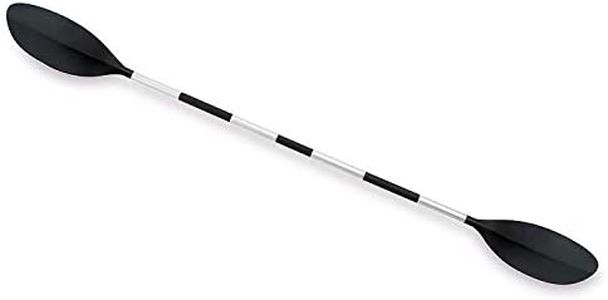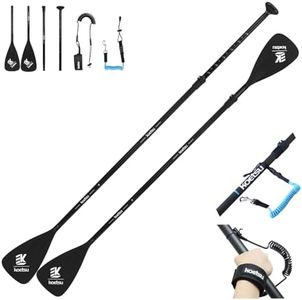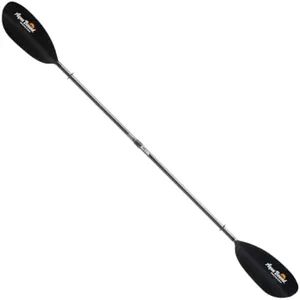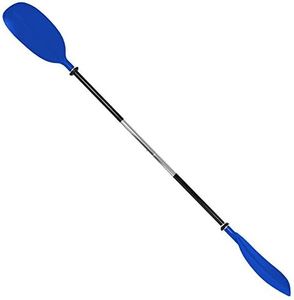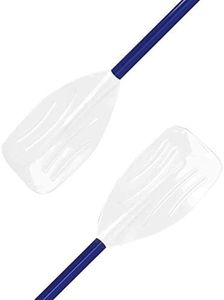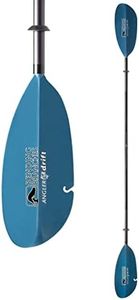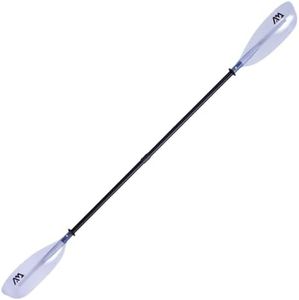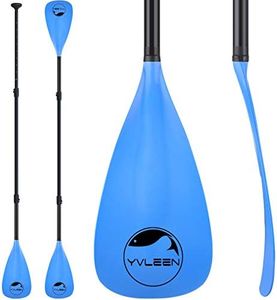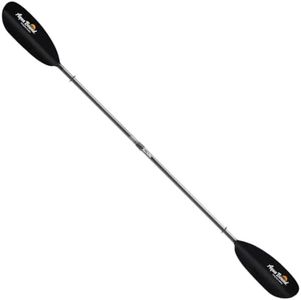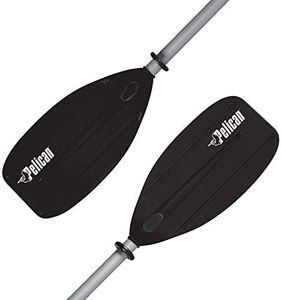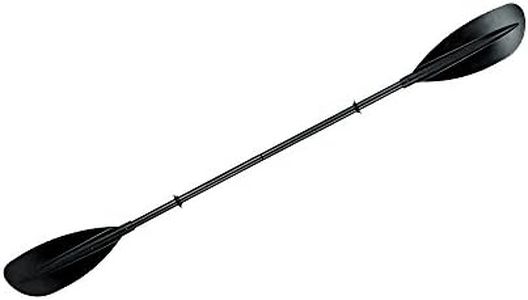We Use CookiesWe use cookies to enhance the security, performance,
functionality and for analytical and promotional activities. By continuing to browse this site you
are agreeing to our privacy policy
10 Best Lightest Kayak Paddle
From leading brands and best sellers available on the web.Buying Guide for the Best Lightest Kayak Paddle
Choosing the right kayak paddle can make a big difference in your kayaking experience. A lighter paddle reduces fatigue, helps you paddle longer, and generally makes your outings more enjoyable. It's important to think about where you'll be paddling, how often, and your personal comfort and strength. The key is to find a paddle that matches your body size, paddling style, and typical kayak trips.WeightWeight refers to how heavy the paddle is, and it's one of the most crucial specs for comfort and endurance on the water. Lighter paddles usually offer better performance and reduce the strain on your arms and shoulders, especially over long distances. Paddles are often divided into three weight ranges: heavy (over 35 oz), mid-weight (27-35 oz), and lightweight (under 27 oz). If you kayak for long periods, have limited strength, or simply want less fatigue, choosing the lightest paddle within your budget and needs is a smart move.
Shaft MaterialThe shaft material affects both the paddle's weight and its durability. Common materials include aluminum (heavier and cheaper), fiberglass (lighter and moderate cost), and carbon fiber (lightest and typically most expensive). If your goal is the lightest paddle, carbon fiber is usually the best choice since it offers high strength while being noticeably lighter than the rest. Those new to kayaking or who want something sturdy may prefer fiberglass as a good middle ground.
Blade MaterialBlade material impacts weight, strength, and paddling efficiency. Blades come in plastic/nylon (heavier, more flexible), fiberglass (lighter, stiffer), and carbon fiber (lightest, stiffest). To keep the paddle as light as possible, look for fiberglass or carbon fiber blades, as these materials make each stroke more efficient and reduce fatigue. If you're a recreational paddler, fiberglass might suffice, while long-distance or performance paddlers should consider carbon fiber.
Blade Size and ShapeBlade size and shape influence how much water you pull with each stroke and how tiring paddling can be. Larger blades move more water and can offer more power, but are heavier and require more effort. Smaller blades are lighter and easier for casual paddling or long journeys. As a general rule, if you value lightweight paddling and endurance, small to medium blade sizes are ideal—they're less tiring and keep overall paddle weight down.
Shaft DesignThe design of the shaft, such as whether it is straight or bent, and if it comes in one, two, or more pieces, also impacts usability and weight. Straight shafts are a bit lighter and simpler, while bent shafts can be more ergonomic but may add a small amount of weight. Break-apart shafts (like two-piece or four-piece) are great for easy storage and travel, though they may weigh slightly more due to locking mechanisms. If lightweight is your priority and you don’t mind a longer paddle to carry, a straight, one-piece shaft is generally lightest.


